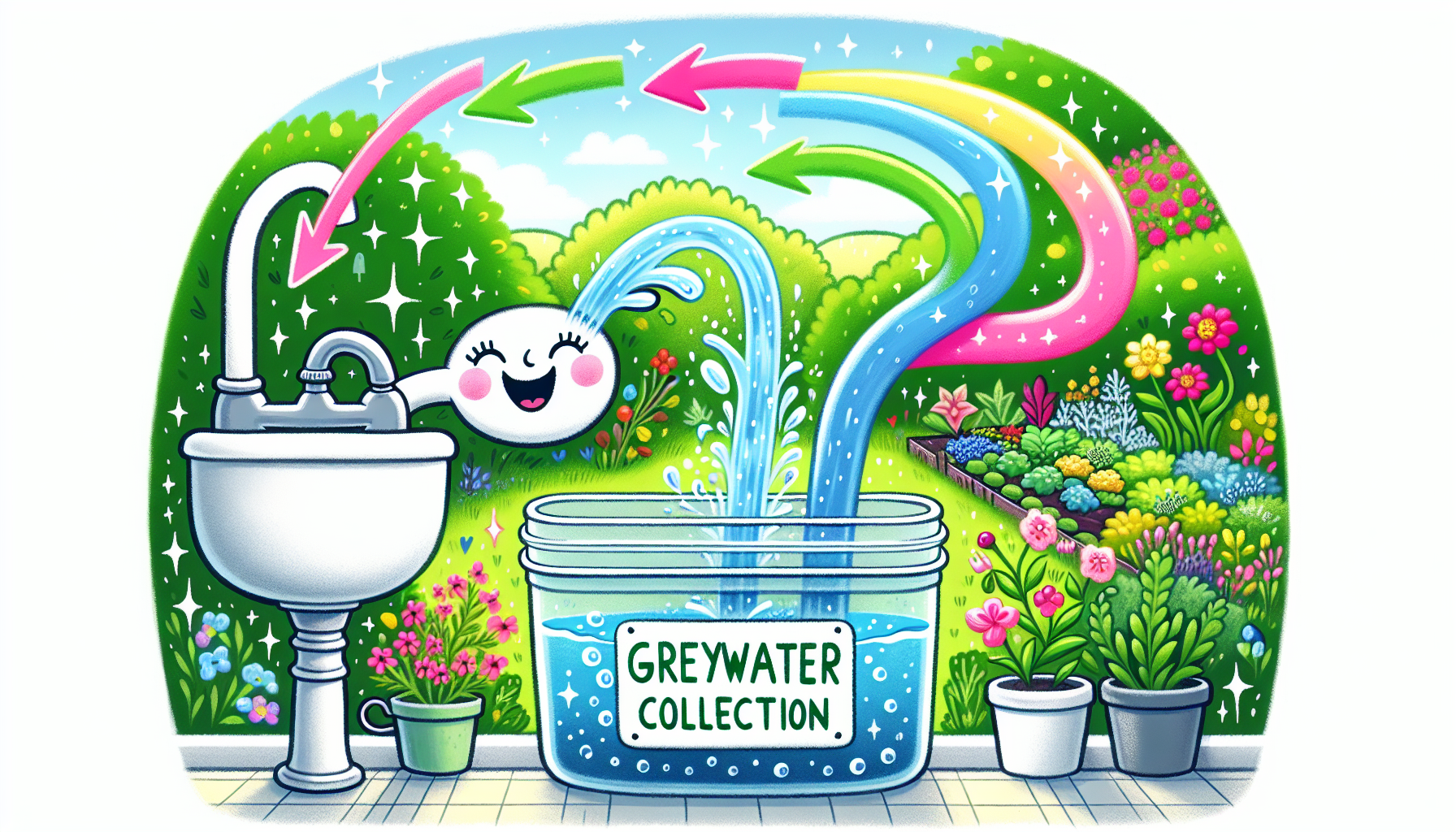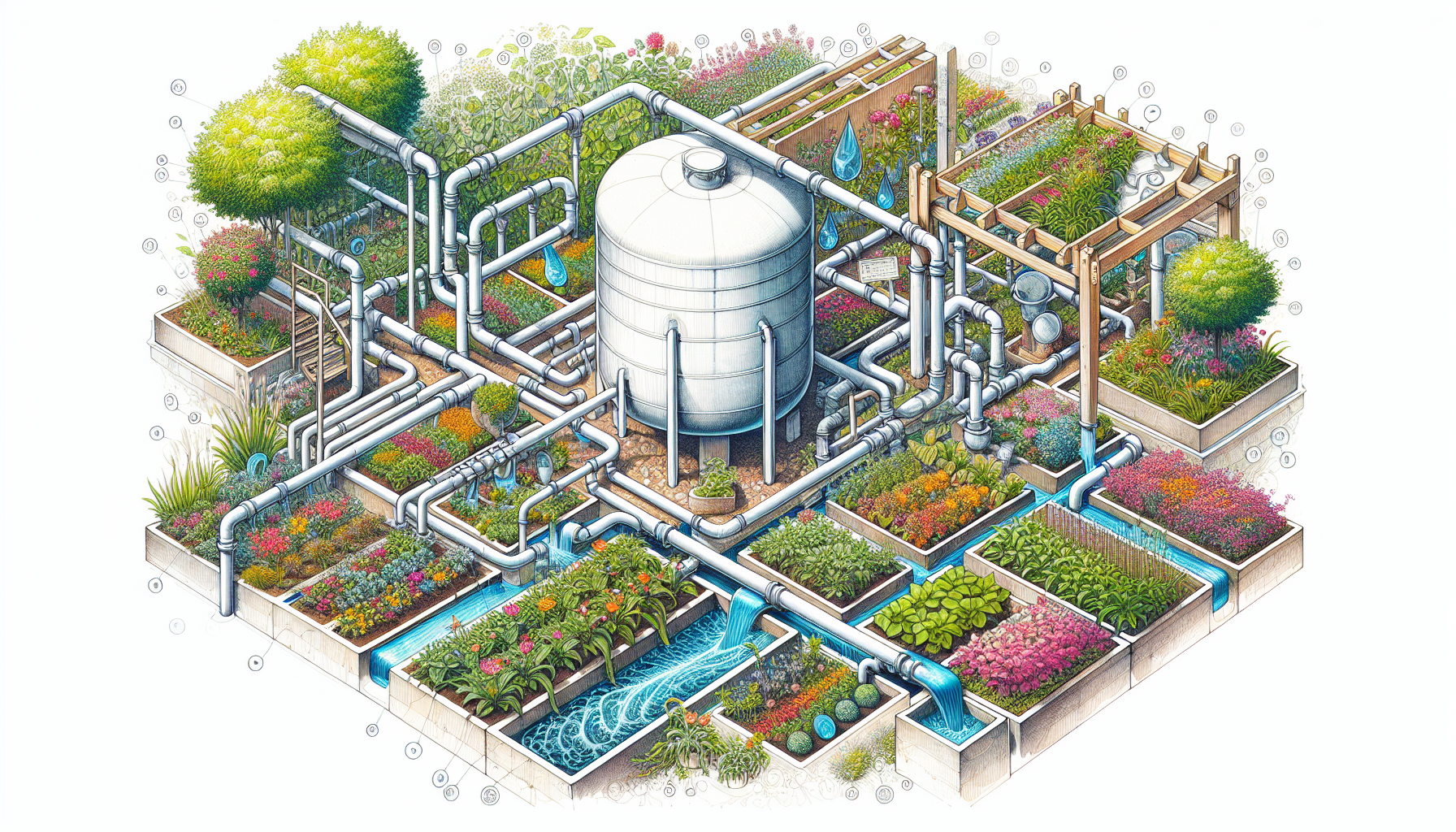Wondering how to reuse grey water from your bath sink or washing machine using a grey water system? This guide will walk you through simple, cost-effective methods like using diverters and gravity-fed systems, and explain the benefits like reducing water bills and conserving resources. You’ll also learn about setting up grey water irrigation, ensuring safety, and navigating legal requirements.
Key Points:
- Grey water from bath sinks and washing machines can be easily diverted for non-potable uses like garden irrigation or toilet flushing with minimal plumbing modifications.
- Implementing a grey water irrigation system enhances water efficiency in gardens while ensuring safety through proper treatment methods to reduce health risks.
- Compliance with local regulations is essential when setting up grey water systems, including obtaining necessary building consents to avoid legal issues.
- Incorporating a surge tank can help manage variable flow rates in grey water systems, ensuring efficient water reuse for irrigation.
Collecting Greywater from Your Bath Sink

Collecting grey water from your bath sink is one of the simplest methods to begin reusing this valuable resource. This method requires minimal plumbing modifications and can significantly contribute to your water conservation efforts. Installing a diverter valve allows you to redirect grey water from your sink or bath to a collection system easily. For added convenience, consider installing a three-way valve, which lets you switch between sending water to the grey water system and the sewer system with just a turn of a handle.
Collecting grey water from your bath sink is particularly effective for non-potable uses such as garden watering or toilet flushing. These simple devices allow you to direct grey water to your garden or a storage tank, minimising the need for extensive construction. This setup not only saves water but also reduces your household’s impact on the environment. The process to divert grey water is straightforward and can be a do-it-yourself project for many homeowners.
Incorporating a grey water system into your existing plumbing might seem daunting, but it can be manageable. With the right tools and a bit of know-how, you can set up a system that diverts grey water from your bath or sink and puts it to good use. It’s satisfying to know that every drop of water you use is being utilised to its fullest potential.
Next, discover how to extend these practices to other sources of grey water in your home.
Utilising Washing Machine Water
Your washing machine is another excellent source of grey water that can be repurposed for garden watering or other non-potable uses. Gravity-fed systems are often the preferred choice for their simplicity and lower maintenance requirements compared to pumped systems. These systems use simple diverters and drainage pipes to direct grey water to your garden, making it an energy-efficient solution.
The laundry drum system offers a low-cost method for those who prefer a more hands-on approach to reusing washing machine water. This system involves pumping wash water into a barrel, which then releases the water through a hose for irrigation. It’s a straightforward setup that doesn’t require significant modifications to your household plumbing. However, if your garden is located at a higher elevation, you might need a pumped system to ensure the water reaches its destination.
Alternatively, the laundry-to-landscape system allows you to divert grey water directly to your garden without modifying your household plumbing. This method is particularly beneficial for homeowners looking for a quick and easy setup. Each approach has its benefits and limitations, and the choice depends on your specific needs and the layout of your property.
Using washing machine water can further reduce your household’s fresh water consumption, leading to significant water savings. Consider how much water a single load of laundry uses and how beneficial it would be to redirect that water to nourish your garden instead of letting it go to waste.
Next, learn how to set up a comprehensive grey water irrigation system to maximise the benefits of every drop.
Setting Up a Grey water Irrigation System

A grey water irrigation system can transform your garden into a lush, water-efficient paradise. Grey water sources such as laundry, bath, basin, and shower water are all suitable for irrigation purposes. The most effective and low-cost methods for reusing grey water include garden watering and dedicated irrigation systems.
Drip irrigation systems are particularly effective because they deliver water directly to the plant roots, minimising evaporation and runoff. For gardens located at higher elevations, pumped systems that require electricity may be necessary. Additionally, surge tanks can regulate the flow and temperature of grey water, reducing the risk of runoff and soil erosion.
Designing your grey water system involves considering the volume of grey water generated and seasonal fluctuations in water usage. Matching the amount of grey water used for irrigation to the specific needs of your plants is crucial. Facilities should also be in place to divert excess grey water to sewer systems when irrigation demand is low. For safety, grey water should ideally be discharged underground to minimise human contact.
Using grey water for irrigation requires selecting non-toxic cleaning products to avoid damaging your plants. It’s gratifying to see your garden thrive on water that would otherwise go to waste. Next, explore how to treat grey water to ensure its safe use in your home and garden.
Treating Greywater for Safe Use

Treating grey water ensures its safe use and minimises health risks. Basic treatment involves using settlement tanks and filtration methods to control microorganisms. A proper filtration system includes layers of gravel and sand that effectively remove impurities from grey water. Aerobic and biological methods can also be utilised to treat grey water and eliminate various contaminants, including those that may enter a septic tank.
Storing grey water in tanks designed to prevent bacterial growth and avoid odour issues is crucial. Reducing health risks involves using collected grey water immediately and minimising storage time. Avoid storing grey water for more than a day to prevent odour and nutrient breakdown. Avoid using grey water on crops intended for raw consumption due to potential health risks.
Untreated grey water poses significant health risks due to the presence of harmful bacteria. Proper treatments are necessary to reduce pollutants and safeguard health. It’s reassuring to know that your grey water system is conserving water and protecting your family’s health.
Next, examine the legal considerations and permissions required for setting up a grey water system.
Legal Considerations and Permissions
Adhering to local regulations is crucial when setting up grey water systems to avoid legal issues. Grey water is not safe for several activities. It should not be used for cooking, bathing, brushing teeth, swimming, or drinking. Certain local authorities limit the reuse of this resource. This restriction applies specifically to household applications. Therefore, checking local council regulations before installing a grey water system is crucial.
Building consent and possibly resource consent are required for installing a grey water system. Specifically, building consent is needed for collecting grey water from baths, showers, washing machines, and laundry tubs. If you plan to connect grey water to a toilet for reuse, this also requires building consent.
Individuals are responsible for ensuring grey water does not run onto neighbouring properties or into waterways. Understanding these legal considerations will help you navigate the regulatory landscape and avoid potential legal pitfalls.
Finally, explore the maintenance required to keep your grey water system running smoothly.
Maintenance of Greywater Systems

Maintaining grey water systems and a septic system properly prevents contamination and ensures safe reuse. Regularly inspecting the system for potential blockages or leaks will help maintain its efficiency. Following the manufacturer’s recommended guidelines for maintenance is also crucial.
A simple grey water system, such as one connected to your washing machine, requires emptying the filter every time the machine runs. Regular monitoring and maintenance will ensure your grey water system functions properly and continues to provide water savings and environmental benefits.
Maintaining your grey water system allows you to enjoy water conservation benefits without worrying about potential failures or contamination. Next, explore the numerous benefits of reusing grey water.
Benefits of Reusing Greywater

Reusing grey water can significantly reduce overall water consumption, potentially by up to 40%. This reduction translates to lower water expenses for both households and businesses. By incorporating grey water recycling systems, you can also diminish carbon emissions and energy usage during water treatment processes, allowing you to reuse grey water effectively.
Grey water recycling enhances the sustainability credentials of buildings, aiding in achieving environmental certifications. Consider the long-term benefits for both your wallet and the environment. Reusing grey water saves money and contributes to a more sustainable future.
While the advantages of reusing grey water are clear, challenges can still arise. Next, discuss common challenges and their solutions to help you navigate potential issues.
Common Challenges and Solutions
Integrating grey water systems into older homes can be problematic due to existing plumbing constraints. Consulting a plumber can help assess the compatibility of grey water systems with your current plumbing setup. Additionally, significant health risks are associated with untreated grey water, including the potential spread of bacteria.
Implementing treatment solutions for grey water, such as filtration and disinfection, can reduce these health risks. By taking these precautions, you can minimise health hazards and ensure the safe reuse of grey water in your home.
Overcoming these challenges allows you to reap the benefits of a well-functioning grey water system.
Summary
In conclusion, reusing grey water from your bath, sink, and washing machine can significantly reduce water consumption and expenses. By setting up and maintaining a grey water system, you can contribute to environmental sustainability and enjoy the benefits of water conservation.
From collecting grey water to setting up an irrigation system and ensuring proper treatment, this guide has provided practical tips to help you get started. Embrace the journey of reusing grey water and transform your home into a model of water efficiency.
Frequently Asked Questions
What is greywater?
Grey water is the wastewater generated from household activities like bathing, dishwashing, and laundry, which can be sustainably reused for non-potable purposes. By utilising grey water, we can conserve fresh water and promote responsible water management.
Can I use greywater for all types of plants?
You should avoid using grey water on crops intended for raw consumption, as it may pose health risks. However, it can be suitable for many other types of plants.
Do I need a permit to set up a grey water system?
Yes, you likely need a permit to set up a grey water system, which may include building consent and possibly resource consent depending on your local regulations. Always check with your local authority to ensure compliance.
How often should I maintain my greywater system?
You should maintain your grey water system regularly by following the manufacturer’s guidelines and conducting inspections for blockages or leaks. This proactive approach will ensure optimal performance and longevity of the system.
What are the main benefits of reusing greywater?
Reusing greywater significantly reduces water consumption, potentially by up to 40%, which lowers water expenses and contributes to environmental sustainability. This practice not only conserves resources but also helps diminish carbon emissions.



